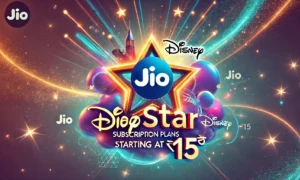Zomato, one of India’s leading food delivery platforms, is increasingly being recognized not just for its ability to connect diners with restaurants, but for its pioneering efforts to integrate cutting-edge technologies to drive profitability. With the Indian food delivery market experiencing robust growth, Zomato’s focus on artificial intelligence (AI), machine learning, and automation has placed it at the forefront of the digital transformation of the sector. As the company moves toward profitability, its technological innovations are set to not only optimize delivery operations but also enhance the overall customer experience, potentially reshaping the future of e-commerce in India.
Zomato: The Rise of India’s Food Delivery Giant
Founded in 2008, Zomato has emerged as a dominant player in India’s rapidly growing online food delivery market. Over the years, Zomato has expanded its operations beyond food delivery to include restaurant discovery, online ordering, and reviews. It competes with other significant players in the Indian food-tech industry, such as Swiggy, which has also grown to become a household name.
However, profitability has remained a challenge for Zomato, as is often the case in the competitive and low-margin food delivery business. Despite continuous investments in expanding its operations, acquiring customers, and developing its brand, Zomato has posted losses in previous quarters, a situation common among fast-growing tech companies in emerging markets. Nevertheless, as 2024 progresses, Zomato is making significant strides in improving its financial performance, thanks to its strategic focus on AI and automation.
The Shift Toward Profitability
Zomato’s journey toward profitability has been a slow but steady process. The company’s strategy has shifted over the past couple of years from focusing on aggressive growth to balancing both growth and sustainability. Key initiatives aimed at profitability include:
- Cost Optimization: In 2023 and 2024, Zomato began intensifying efforts to reduce operational costs, streamline delivery logistics, and enhance the efficiency of its supply chain. By reducing inefficiencies in its operations, Zomato has been able to reduce the gap between revenue and costs, edging closer to profitability.
- Strategic Divestments: Zomato has made some significant strategic moves to streamline its portfolio. The company sold its 9.3% stake in the grocery delivery service Blinkit (formerly Grofers) in 2023, focusing its attention on the core food delivery business. This was part of an effort to trim down underperforming or non-core assets, reinforcing Zomato’s commitment to its most lucrative segments.
- Focus on High-Value Segments: Zomato is increasingly concentrating its resources on high-value customer segments, such as premium subscribers of Zomato Pro and restaurant partnerships that offer lucrative commissions and higher customer retention.
- Improved Unit Economics: Zomato has been working on improving its unit economics—balancing the costs of customer acquisition with lifetime value (LTV). This is a critical step in turning the business profitable. The company has reduced the cost per delivery and improved the efficiency of its last-mile delivery network.
Zomato’s AI and Automation Strategy
The heart of Zomato’s efforts to achieve profitability lies in its commitment to AI and automation. The company has recognized that, to maintain competitive advantage in the crowded food-tech industry, it must leverage emerging technologies that reduce costs, increase efficiency, and improve user experience. These technological innovations are helping Zomato optimize multiple aspects of its business, including customer interactions, delivery logistics, and marketing.
AI-Driven Personalization and Customer Experience
One of the most powerful applications of AI within Zomato is personalization. AI algorithms are used to analyze vast amounts of customer data to provide tailored recommendations and experiences. This includes personalized menu suggestions based on user preferences, location, and past order behavior. By enhancing the user experience through more accurate and relevant recommendations, Zomato is able to increase customer engagement and drive repeat purchases.
Additionally, Zomato’s AI systems are used to optimize customer support. Chatbots and virtual assistants powered by AI now handle a substantial portion of customer queries, reducing response times and improving service efficiency. AI-powered sentiment analysis tools also help the company gauge customer feedback in real-time, enabling it to address any issues or complaints more proactively.
Automation in Delivery Logistics
The role of automation is particularly evident in Zomato’s delivery operations. As one of the most cost-sensitive aspects of the business, optimizing delivery logistics is crucial for improving profitability. Zomato has implemented AI-driven route optimization algorithms that enable its delivery fleet to pick the fastest and most cost-effective routes. This minimizes fuel consumption, reduces delivery times, and ensures timely orders, all of which are key to maintaining customer satisfaction and reducing operational costs.
Zomato has also been testing autonomous delivery systems, including drones and robots. Though still in early stages, these innovations hold significant potential for reducing the need for human drivers in certain areas. Automation could drastically cut labor costs, improve scalability, and ensure more sustainable operations.
Smart Kitchens and Cloud Kitchens
AI and automation are not limited to delivery logistics; they are also revolutionizing the kitchen side of the food delivery process. Zomato has been investing in “cloud kitchens,” which are essentially delivery-only kitchens located in strategic areas to minimize delivery times and optimize resources. These kitchens are operated by AI-driven systems that manage inventory, ordering, and even the preparation of food. By reducing overhead costs associated with maintaining a traditional restaurant, cloud kitchens offer a more efficient model for the growing demand for food delivery.
Zomato is also working with restaurant partners to implement smart kitchen technologies that track real-time data on food preparation times, order accuracy, and kitchen efficiency. These insights help restaurant partners optimize their operations and provide faster, more reliable service to customers.
AI-Powered Marketing and Customer Acquisition
AI is also central to Zomato’s marketing strategy. Machine learning algorithms analyze user behavior, demographics, and preferences to craft targeted campaigns that reach the right customers at the right time. By leveraging data to create more effective advertising strategies, Zomato is able to optimize its customer acquisition costs and boost the lifetime value of each customer.
Additionally, AI is used for dynamic pricing, allowing Zomato to adjust prices in real-time based on demand fluctuations, geographic location, and other variables. This pricing flexibility helps Zomato maintain competitive advantage while maximizing revenue potential.
The Role of Automation in Scaling Operations
As Zomato seeks to scale its operations across India and potentially other global markets, automation is a key enabler. Zomato’s platform is now capable of handling millions of orders per day, and automation is essential to ensuring that the infrastructure can grow without a proportional increase in costs.
For example, Zomato has implemented automated systems for order processing, where AI processes incoming orders, assigns them to the appropriate restaurant, and schedules delivery based on real-time availability. This removes the need for human intervention at multiple stages of the order lifecycle, speeding up the process and reducing the risk of errors.
Cost-Saving Through Automation
Automation in warehouses, inventory management, and procurement systems has allowed Zomato to cut down on operational overhead. By using AI to forecast demand for various food items in real-time, Zomato can ensure it is never overstocked or understocked, which ultimately results in more efficient supply chain management and fewer losses due to food waste.
Moreover, automation is helping Zomato maintain profitability despite the pressures of rising labor costs in India. Through the use of robotic process automation (RPA), Zomato has been able to cut down on administrative expenses, further contributing to cost savings.
Challenges and Future Outlook
Despite the impressive strides Zomato has made, several challenges lie ahead. The food delivery sector is still highly competitive, with multiple players vying for market share. Additionally, Zomato’s focus on AI and automation, while promising, also requires significant investment and a long-term commitment to technology development.
Labor and regulatory concerns surrounding AI and automation in India also present potential hurdles. As the company tests more automation technologies, it will need to navigate the regulatory landscape, which may impose restrictions on the use of drones, robots, or AI-driven platforms.
That said, Zomato’s current trajectory is promising. The Indian food delivery market is expected to grow at a compounded annual growth rate (CAGR) of 18-20% between 2024 and 2025. As the company’s AI and automation initiatives continue to evolve, Zomato is well-positioned to capture more market share, optimize costs, and emerge as a more sustainable and profitable business.
Conclusion: Zomato’s Technological Edge and the Future of E-Commerce in India
Zomato’s journey toward profitability in the food delivery sector is emblematic of the broader trends reshaping e-commerce in India. With AI and automation playing pivotal roles in enhancing efficiency, reducing costs, and improving customer experience, Zomato is setting the stage for future growth and long-term sustainability.
As AI technology continues to evolve and automation becomes more widespread, Zomato’s focus on these innovations positions the company to lead the way in an increasingly digital and tech-driven food delivery landscape. The strategic investments Zomato is making today in AI and automation will have far-reaching implications, not just for the food-tech industry, but for the broader Indian e-commerce sector, which continues to experience rapid growth.
With the right balance of innovation, customer-centricity, and operational efficiency, Zomato is poised to not only achieve profitability in the short term but also cement its position as a long-term leader in India’s e-commerce and food delivery landscape.
Table: Zomato’s Strategic Investments in AI and Automation
| Area | Technology | Impact |
|---|---|---|
| Customer Personalization | AI-driven recommendations | Enhanced user experience, increased repeat purchases, higher LTV |
| Delivery Logistics | AI route optimization, drones | Reduced delivery time, fuel savings, lower labor costs |
| Cloud Kitchens | AI-powered kitchen management | Reduced operational costs, more efficient food preparation |
| Customer Support | AI chatbots, virtual assistants | Faster response times, higher customer satisfaction |
| Marketing | Machine learning algorithms | More effective campaigns, reduced customer acquisition costs |
| Order Processing | Automated order management | Faster processing times, fewer errors, improved customer experience |
| Cost Optimization | Robotic process automation (RPA) | Reduced administrative costs, improved scalability |
As Zomato continues to embrace the future of AI and automation, it is clear that the company’s technological edge is transforming not just its operations but also the larger food delivery market in India. Whether Zomato’s innovative path to profitability can be replicated across the e-commerce landscape remains to be seen, but one thing is certain: Zomato’s bold steps in AI and automation are setting the stage for an exciting future in the food delivery industry.


